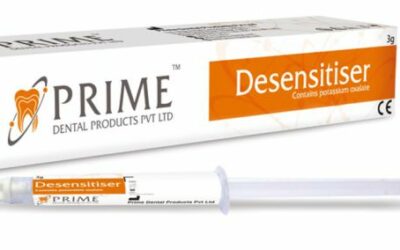Restorative Dentistry has undergone a paradigm shift in recent times. Dental Composites have completely revolutionized the way restorative dentistry is practiced now. Dental Amalgams were the material of choice for many decades, but with the advent of dental composites and adhesive dentistry, there has been an increasing demand for esthetics as well as function.
What makes these composites unique?
Dental composites are synthetic materials composed of polymer matrix with dispersion phase of glass, mineral, resin filler particles bonded together by coupling agents. Traditional composites contain relatively large particles of ground amorphous silica and quartz. Traditional composites had good mechanical properties but showed poor wear resistance. To overcome this drawback, smaller particles were incorporated in the matrix phase which drastically improved the wear resistance as well as the marginal shrinkage. Various filler particles like quartz, heavy particles like barium, strontium, zinc, aluminum were added to improve the esthetic properties of the composites. Dental composites widely used for restorations are hybrid and micro fill type.
An overview of GC Solare X
I have been using Tetric N-ceram Bulk Fill by Ivoclar Vivadent for quite some months now and wanted to switch to newer materials for posterior restorations. My area of focus was class-I and class-II preps and endodontically treated teeth as well. I have been using GC products for other treatment modalities like rubber base impression material and luting final restorations. I had got an overwhelming response for the Solare X composite from my fellow colleagues and hence I decided to use it and check by myself.
According to research, the new generation of pre-polymerized fillers and nano-sized silica particles gives Solar X a cutting edge over other composites. The pre-polymerized fillers give a unique translucency to the material. The composite blends really with the tooth, giving it almost a life-like appearance. The material is packaged as a 5gm syringe which can restore a substantial number of cavities which makes it even more cost-effective.
Fracture toughness and polymerization shrinkage
Though there are various properties that a clinician looks for in a dental composite for a posterior tooth; the major properties revolve around the ‘fracture toughness’ and ‘polymerization shrinkage’ of the material. According to research, fiber orientation is an important factor in determining the fracture resistance of the material. Short fibers that are randomly oriented and pre-polymerized fillers act as a crack stopper by reducing the stress transfer to the matrix phase thereby reducing the polymerization shrinkage and marginal leakage. Because of reduced marginal leakage, the material adapts well to the tooth structure thereby increasing the fracture toughness.
I also personally chose this composite for post obturation restoration which required a bulk filling material to compensate for the lost tooth structure. I am glad I chose GC Solare X for this case, as this material proved to have better strength to withstand the heavy occlusal forces.

Shade selection was easy
Solare X has a simplified shade range such as X-A1, X-A2, X-A3, X-A3.5, X-A02 and X-WT. Since, my area of interest was posterior restorations I preferred to use shade X-A2 and X-A3. Also, it’s a universal composite so single shade gives desirable results.
Whenever I consider switching my composites one thing I look for is the handling characteristics of the composite material. Solare X has excellent handling properties. I personally experienced sufficient time to manipulate the material, adapt, contour, polish and then finish my restoration. The material does not stick to the instrument and therefore is easy to handle.
Not just the class-I preps but the composite bonds, flows and adapts well to the walls and floor in the box preparations of class-II cavities too. I have also used Solare X composite in endodontically treated teeth like premolars and molars. The material has shown good results with not even a single breakdown case. The material works really well as an interim restoration too before the tooth receives a final restoration.
Reasons to try these out
- These composites have high esthetic properties.
- As mentioned above they have excellent handling properties.
- Being a non sticky material it’s more hassle-free to use.
- Easy to manipulate.
- Cost effective since it comes in a 5 gm syringe. Hence, more restorations can be done in a single purchase.
- Good marginal adaptability.
Highlights
- Though Solar X is indicated for anterior as well as posterior restorations, I would highly recommend it for posterior restorations.
- The simplified shade system reduces the layering technique and the single shade system gives high end esthetic results.
- The handling characteristics of the material makes clinical manipulation even more easy which finally helps to achieve high quality restorations.
- This material has greater fracture toughness and strength with reduced polymerization shrinkage.



0 Comments